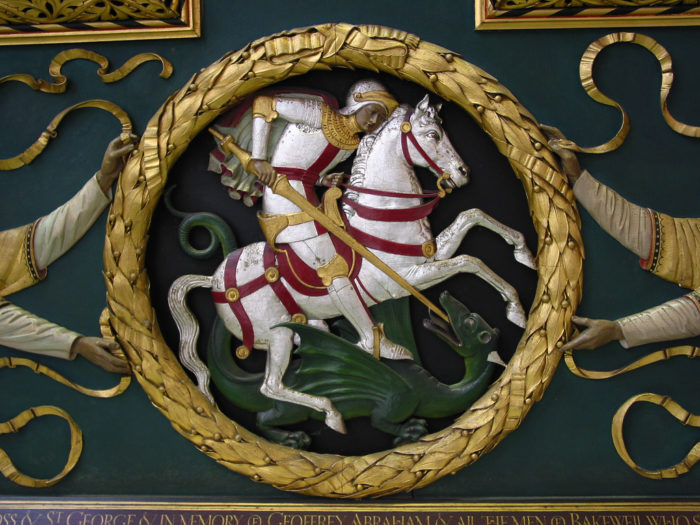
There are many oddities in English history. One is that our patron saint is St George. It is an ecumenical oddity. His feast day, 23 April, is both a Solemnity in the calendar of the Roman Catholic Church in England, and a ‘Feast’ in the Church of England calendar (and he is a major saint in both the Orthodox and Eastern Catholic traditions). But what makes a third century Roman soldier, born in Cappadocia (now Turkey) and raised in Lydda (now Palestine), and martyred for his faith by the Emperor Diocletian, a hero (for that is what patron saints are) of England? He is not even exclusive: Georgia, Malta, Romania and Portugal also have him as their patron.
The probable answer is his link with the English, and later British, Royal Family. He was already venerated in Anglo-Saxon England as a martyr. He is mentioned by the Venerable Bede, and church dedications to him date back to King Alfred. However, for many years, the traditional patron saint was a different royal figure, King Edward the Confessor. What brought St George to prominence were two very different events that convulsed the Christian world: the crusades, and the Reformation.
As a military figure, St George was a natural patron of the various chivalric orders that were established during the period of the crusades. It was crusaders who brought back the tale of the slaying of the dragon. 23 April became a feast day in England in 1222, and when King Edward III created the Order of the Garter, England’s premier chivalric order, it was St George he chose as its patron. The St George battle cry – evoked famously by Shakespeare in his depiction of the Battle of Agincourt (pleasingly, we celebrate Shakespeare’s 400th anniversary also on 23 April, the day of his death) – was probably shouted for the first time during the Hundred Years War. St George was declared the protector of the Royal family around that time.
And that is almost certainly what “saved” his cult in England during the Reformation. Henry VIII was a great patron of the Order of the Garter – the Abbot of the Papal Basilica of St Paul’s outside the Walls, closely linked to England in the 16th century, still has the Garter on its Coat of Arms, almost certainly awarded by King Henry – and keen to link his rule with the Plantagenet military successes against France. When saints’ banners were banned in 1552, including that of Edward the Confessor – whose royal status could not save him the indignation – St George was excepted. It was a natural development for the Royal banner of the Cross of St George to become the national banner (as used on English ships from the 16th century), later incorporated into the Union Flag of Great Britain and the United Kingdom. England is now full of churches, schools, hospitals, castles and other institutions dedicated to him – even the British school in Rome is a St George’s School.
It is an untidy history, with many odd diversions, from an original tale of bravery and martyrdom under an emperor, to the lone survivor (for a while) of saintly iconography during England’s convulsive and sui generis Reformation. But that, perhaps, is also one way of summing up the history of England itself. In that sense, St George makes a very appropriate patron. It seems right that I shall be spending his feast day watching a cricket match between the Royal Household XI and St Peter’s Cricket Club, here in Rome.
